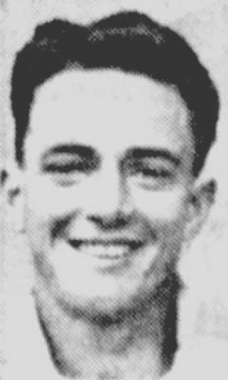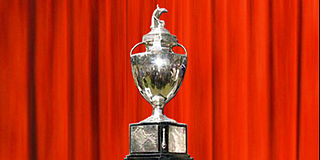
The Mumbai cricket team, formerly known as the Bombay Cricket Team, is a cricket team which represents Mumbai in Indian domestic cricket. It is governed by Mumbai Cricket Association. Its home ground is Wankhede Stadium in Churchgate.

The Brabourne Stadium is an international cricket stadium in Mumbai in Western India, built in the British Bombay era. It is the home ground of the Mumbai men's and women's cricket teams. It can accommodate 50,000 people for sports matches. The ground is owned by the Cricket Club of India (CCI). The North Stand of the Brabourne had housed the Board of Control for Cricket in India (BCCI) headquarters and the 1983 Cricket World Cup trophy until 2006, when both were moved to the newly built Cricket Centre at the nearby Wankhede Stadium.

Farokh Manecksha Engineer is an Indian former cricketer. He was a wicket-keeper-batsman, usually an opening batsman, who represented India in 46 Test matches from 1961 to 1975. In first-class cricket, he played for Bombay from 1959/60 to 1974/75, for West Zone from 1961/62 to 1974/75, and for Lancashire County Cricket Club from 1968 to 1976. He was the first-choice wicket-keeper for the Rest of the World team which toured England in 1970 and Australia in 1971–72.
John Glennie Greig was an English first-class cricketer and cricket administrator, British Army officer, racquets and tennis player, and Roman Catholic priest.
The Bombay Tournament was an annual cricket competition held in British India between 1892 and 1946. Until 1936, matches were played on either the Gymkhana Ground in Bombay or the Deccan Gymkhana Ground in Poona, and then at the Brabourne Stadium in Bombay until the tournament was terminated in 1946. The tournament was known variously as the Bombay Presidency Match, Bombay Triangular, Bombay Quadrangular, and Bombay Pentangular, depending on the number of competing teams.
Leonard Litton Wilkinson was an English cricketer who played in 3 Tests from 1938 to 1939. He was a leg spin bowler and played first-class cricket for Lancashire County Cricket Club between 1937 and 1947, although his career was interrupted by the Second World War.
In India, the Bengal cricket team represents the Cricket Association of Bengal (CAB) in domestic competition. Based at the historic Eden Gardens in Kolkata, they have played first-class cricket since 1935. Bengal have won the Ranji Trophy twice and been runners-up 13 times. They also play in the Syed Mushtaq Ali Trophy and the Vijay Hazare Trophy, both of which they have won once. Several international cricketers have played for the team including Dilip Doshi, Sourav Ganguly, Deep Dasgupta, Mohammed Shami, Pankaj Roy, and Wriddhiman Saha.
The Madras Presidency Match was an annual first-class cricket fixture played in Madras from the 1915–16 season to 1951–52 between teams called the Indians and the Europeans. The matches were played in the Chepauk Grounds usually in mid-January around the time of Pongal festival, and the fixture was sometimes called the Pongal match. Of the 37 matches played, 33 were first-class and the Indians won 15 of those, the Europeans eight and ten were drawn.
This article describes the history of cricket in British India from the 1918–19 season until the end of the Second World War in 1945.
The Rest was an Indian first-class cricket team which took part in the annual Bombay Tournament from 1937–38 to 1945–46. It comprised those players who did not fit into any of the teams that took part in the Quadrangular, including Catholics, Jews and mixed-race Anglo-Indians. Several leading players from Ceylon also took part. The team reached the final of the Pentangular twice, in 1940–41 and 1943–44. In the 1943–44 final Vijay Hazare scored 309 out of the team's total of 387.

Frank Belmont Warne was an Australian first-class cricketer who played for teams on four continents during a 95-game career that stretched from the mid-1920s to the early 1940s.

The 1937–38 Ranji Trophy was the fourth edition of the Ranji Trophy, an annual first-class cricket tournament in India. Matches were played from 17 October 1937 to 24 February 1938 with a total of 18 teams participating. The sides were divided into four zonal groups, but the tournament utilised a knockout format. Hyderabad defeated the defending champions Nawanagar in the final.
Patrick Covell Derrick McCarthy was a Ceylon-born cricketer who played first-class cricket for Ceylon in the 1940s before moving to Australia and playing for Western Australia in the 1950s.

George McVeagh, also known as Trevor McVeagh and T. G. McVeagh, was an Irish sportsman who was capped in four sports for his country as a cricket, hockey, tennis, and squash player. He is considered the greatest all-round sportsman of his day in Ireland.
The Lahore Tournament was an Indian cricket competition, nominally annual, that was held in each of the seasons from 1922/23 to 1929/30, apart from 1926/27. A total of 18 matches were played, all first-class and all at the Lawrence Gardens ground in Lahore. The format was similar to the Bombay Quadrangular and the Madras Presidency Match as the competing teams were the Europeans, the Hindus, the Muslims and the Sikhs. The Sikhs were unique to the Lahore Tournament and their team withdrew after the 1925/26 edition.





